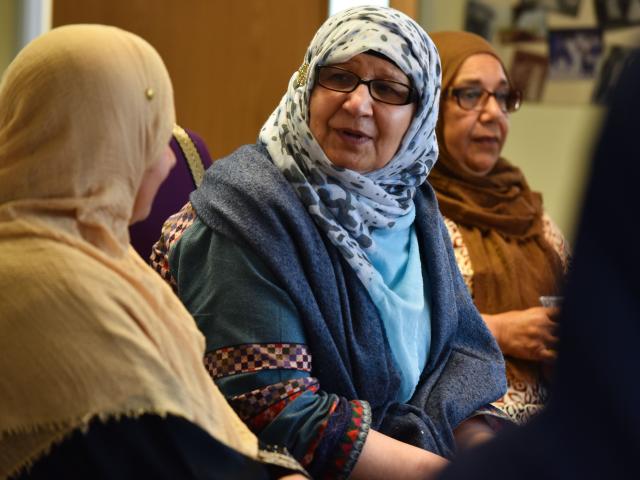
Behind the scenes – some of the support provided to researchers to access public involvement
Public involvement is not a one size fits all and there are many ways in which the team at Health and Care Research Wales can help you to do it. When we receive a request for support from a researcher, we explore the best ways to help them connect with the most appropriate members of the public ensuring their project is shaped by meaningful input. To do this we use the four principles of public involvement; involve the right people, enough people, involve those people enough and describe how it helps.
Hi, I’m Emma Langley, Public Engagement and Involvement Officer at Health and Care Research Wales and over the last few months I’ve been helping researchers connect with community groups to shape their research proposals.
In October 2024, we received a request from Catherine Purcell, a researcher from Cardiff University and affiliate of the Centre for Adult Social Care Research (CARE), who was looking for people who face difficulties walking or cycling around their community, to help shape her research project.
First, we had a meeting with Catherine to talk about the project and how the public could help through sharing their experiences with active travel.
After our conversation, we identified the community group, AgeAlive 50, could offer valuable insights. This group is from under-served communities and live in Newport, an area Catherine was interested in.
I reached out to the AgeAlive 50, who I’ve worked with over the last 15 months, to see if they would like to be involved and along with our trusted involvement community member, Rahila Hamed, she agreed this was a good project to share their experiences and opinions on travelling around their local area.
Catherine, her colleague Lisa, and I met with the group to talk about their journeys around Newport. To help everyone feel comfortable, we thought it would be a good idea for me to visit before the researchers arrived. This way, I could have a quick chat with them about what to expect, explain what the research was about and share how they could give feedback to the researchers. This approach helped set clear expectations, ease any concerns and showed our commitment to open communication and support.
Before the meeting, we had a discussion with our community member about the best way to engage everyone. We agreed that a casual conversation would be better than a formal presentation. When the meeting started, Catherine introduced herself and talked about her background, how she got into research and the importance of her work. Catherine then asked the group about their experiences in their local area, including how easy it was for them to walk, use buses, find bus schedules and how safe they felt.
Because Catherine’s introduction was informal and approachable, the group were put at ease and felt comfortable. This is when the conversation began to flow, the group members found it very easy to feedback their experiences, discussing issues such as the layout of pavements with separate cycle and walking lanes, how certain disabilities hindered walking and difficulties using digital bus timetables due to having basic mobile phones, many rely on fellow group members for lifts.
Their feedback allowed Catherine and Lisa to gather relevant information to shape their project which was looking at challenges and obstacles people face accessing active travel initiatives.
Catherine reflected on how the meeting influenced the funding proposal for their research project, stating: “Our meeting with AgeAlive helped to shape our approach for an National Institute for Health and Care Research (NIHR) funding application. Engaging with members of this group provided valuable insights that challenged our assumptions and broadened our perspective.
“Their lived experiences and expertise helped us refine our research focus and consider aspects we might have otherwise overlooked.
“This collaboration not only strengthened the relevance and impact of our proposal but also highlighted the importance of co-production in developing meaningful and inclusive research.”
Rahila said that it was the “first time ever people from diverse communities had been able to express their honest opinions and views and been listened to with such goodwill from your [Health and Care Research Wales] end.”
If you’d like to find out more about how we can support you with public involvement or more about our work involving community groups, get in touch with us research-involvement@wales.nhs.uk